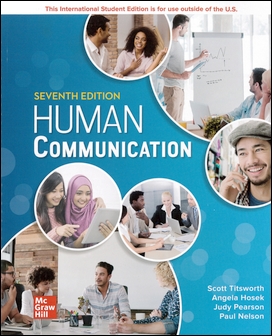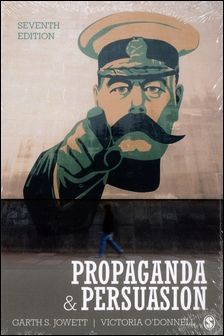書籍分類

Human Communication 7/e
作者:Scott Titsworth, Angela Hosek, Judy Pearson, Paul Nelson
原價:NT$ 1,150
內容介紹 目錄 作者介紹
- Changes to the New Edition: Highlights
New and updated material in this edition of Human Communication reflects the latest research in the field, as well as McGraw-Hill Education's research identifying the skills and topics students find most challenging.
Chapter 1: New opening vignette on problem-based student advocacy; updated sources and statistics on the importance of communication skills and the value of the communication major; updated terminology and discussion of online communication, including the addition of recent data throughout the chapter on students' use of mobile smart technology.
Chapter 2: New opening vignette on perception and learning; new section on current social and political events, which showcases contemporary situations, such as the #MeToo movement and athletic activism, to depict differences in perception; revised discussion of online presence, including recent research on social media, depression, and loneliness among college students and ways to monitor and reduce social media usage.
Chapter 3: New opening vignette on how words and phrases convey meaning, using food deserts as an example; extended sections on gender-biased and racist language with updated research; new Engaging Diversity feature box on using apps to learn new languages.
Chapter 4: New opening vignette on how appearance conveys nonverbal messages; expanded discussion of online approaches to nonverbal communication, such as using emojis and GIFs to express emotion; additional discussion of American Sign Language to clarify relationships between verbal and nonverbal communication; revised section on physical attractiveness to emphasize contemporary research on culturally centered and shifting perspectives on attractiveness; updated coverage on gender differences in nonverbal communication, particularly perceptions of touch; updated examples in the discussion of clothing and artifacts as they relate to public advocacy.
Chapter 5: New opening vignette on the StoryCorps project; revised discussion of memory to help students better differentiate between memory resources; new discussion of polarization as an impediment to listening, including analysis of why finding common ground through careful listening is preferable to simply agreeing to disagree; expanded coverage of skills to Improve listening, including various note-taking methods.
Chapter 6: New opening vignette on the gender nonbinary character in Showtime's series Billions to highlight how gender and language are at work when developing, relationships; updated statistics on trends related to forming and maintaining interpersonal relationships online, such as long distance and geographically close relationships; expanded coverage of the influence of social media on interpersonal relationships; new Communicating Creatively feature box on how to use art
to cope with difficult topics; new Engaging Diversity feature box on intercultural relationships and creativity.
Chapter 7: New opening vignette on Meghan Markle's marriage to Prince Harry as it relates to intercultural communication; updated statistics on the increasing diversity in the United States; expanded discussion of polarized views on intercultural issues; revised coverage of dominant cultures and co-cultures; new coverage of cultural differences and Schwartz's value perspective, as well as recent research on the relative tightness or looseness of cultural characteristics as they relate to national boundaries.
Chapter 8: Updated coverage on group organization and interaction; new Engaging Diversity feature box on Project Row House; revised discussion of how groups can be impacted by polarization and ways to challenge this in group settings; new examples of technology tools that groups can use; revised Communicating Creatively feature box to include new examples of creative coworking spaces.
Chapter 9: New opening vignette on polarization and incivility in the workplace; updated coverage of best practices for electronic submission of application materials; expanded discussion of personal SWOT analysis; updated discussion of sexual harassment to include current examples and the concept of "duty to report."
Chapter 10: New opening vignette on a grassroots charity for a specific audience; revised Building Behaviors feature box on podcasts.
Chapter 11: Updated discussion of the sleeper effect and self-disclosure; new coverage of fake news; new examples to clarify the differences among brief, extended, factual, and hypothetical examples, as well as to illustrate use of analogies.
Chapter 12: New opening vignette on the opioid crisis; chapter reorganized to add clarity to the discussion of outline formats; new example outlines throughout the chapter.
Chapter 13: New opening vignette on Lady Gaga's Academy Award acceptance speech; new examples and detailed discussion of various types of graphs; new Engaging Diversity feature box on inclusive slide design principles.
Chapter 14: New opening vignette on musician Stevie Nick's 2019 Rock and Roll Hall of Fame acceptance speech; updated examples throughout the chapter; new informative speech example.
Chapter 15: New opening vignette on actor Regina King's 2019 Golden Globes acceptance speech; revised discussion of rebuttals; updated Engaging Diversity feature box on how different cultures view persuasive appeals; revised coverage of the Monroe Motivated Sequence; new examples throughout the chapter; new persuasive speech example.







